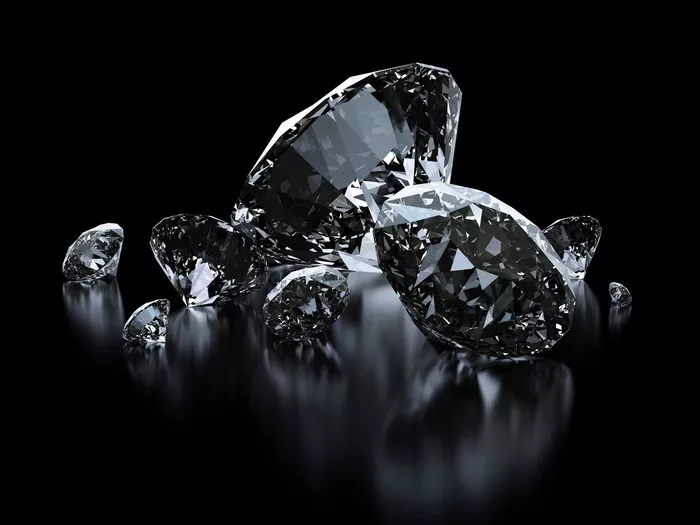In recent years, the diamond industry has witnessed a significant shift with the emergence of lab-grown diamonds. These man-made gems offer an ethical and sustainable alternative to traditional mined diamonds. However, with this rise in popularity comes the need for consumers to be able to distinguish between natural and lab-grown diamonds. Whether you’re a jeweler, a diamond enthusiast, or someone considering purchasing a diamond, knowing how to identify lab-grown diamonds is crucial. In this comprehensive guide, we’ll delve into the various methods and techniques used to differentiate lab-grown diamonds from their natural counterparts.
Understanding the Basics: What Are Lab-Grown Diamonds?
Before we delve into identification methods, it’s essential to understand what lab-grown diamonds are and how they differ from natural diamonds. Lab-grown diamonds, also known as synthetic or cultured diamonds, are created in a controlled laboratory environment rather than being formed naturally within the Earth’s crust over millions of years. Despite their origin, lab-grown diamonds possess the same physical, chemical, and optical properties as natural diamonds. They are composed of carbon atoms arranged in a crystal lattice structure, making them visually and chemically indistinguishable from mined diamonds.
Why Identify Lab-Grown Diamonds?
The need to distinguish between lab-grown and natural diamonds arises for several reasons:
1. Ethical Considerations: Many consumers prefer lab-grown diamonds due to ethical concerns surrounding traditional diamond mining, such as environmental degradation and human rights issues.
2. Value and Pricing: Lab-grown diamonds typically cost less than natural diamonds of comparable quality. Therefore, it’s crucial for consumers to accurately identify the type of diamond they are purchasing to ensure they are getting the appropriate value.
3. Transparency: Jewelers and retailers have an ethical obligation to provide transparent information to consumers regarding the origin of the diamonds they sell. Being able to accurately identify lab-grown diamonds helps maintain trust and integrity within the industry.
Methods for Identifying Lab-Grown Diamonds
Several methods and techniques can be employed to identify lab-grown diamonds. These include:
1. Observation and Visual Inspection:
Inclusions: Natural diamonds often contain inclusions such as minerals, fractures, and other imperfections formed during their growth process. Lab-grown diamonds, on the other hand, may exhibit different types of inclusions, including metallic flux residues or growth striations.
Color: While both natural and lab-grown diamonds come in various colors, certain hues and color combinations may be indicative of a diamond’s origin. For example, lab-grown diamonds are more likely to exhibit a consistent and evenly distributed color throughout the stone.
2. Advanced Spectroscopy Techniques:
UV Fluorescence: Lab-grown diamonds may exhibit different fluorescence patterns under ultraviolet (UV) light compared to natural diamonds. For instance, some lab-grown diamonds may fluoresce a different color or intensity than natural diamonds when exposed to UV light.
FTIR Spectroscopy: Fourier-transform infrared spectroscopy (FTIR) can be used to analyze the infrared absorption spectrum of a diamond. Certain features in the spectrum may indicate the presence of specific growth methods or treatments commonly associated with lab-grown diamonds.
3. Diamond Grading Reports:
Certification: Many lab-grown diamonds are accompanied by grading reports from reputable gemological laboratories. These reports provide detailed information about the diamond’s characteristics, including its origin and whether it is natural or lab-grown.
Inscription and Laser Markings: Some lab-grown diamonds are laser-inscribed with a microscopic identification code or logo by the manufacturer. This inscription can be viewed under magnification and serves as a reliable indicator of a diamond’s origin.
4. Advanced Instrumentation:
DiamondView™: This advanced imaging system utilizes shortwave UV light to detect fluorescence patterns and growth structures within diamonds. It can help identify characteristics typical of lab-grown diamonds, such as metallic inclusions or growth patterns.
Saratov Technique: Developed by Russian scientists, this method involves subjecting a diamond to high-pressure, high-temperature (HPHT) treatment to induce specific changes in its optical properties. Natural diamonds may respond differently to this treatment compared to lab-grown diamonds.
Conclusion
As lab-grown diamonds continue to gain traction in the jewelry market, the ability to accurately identify them has become increasingly important. By employing a combination of visual inspection, spectroscopy techniques, grading reports, and advanced instrumentation, jewelers and consumers alike can confidently distinguish between lab-grown and natural diamonds. Ultimately, understanding how to identify lab-grown diamonds not only ensures transparency and integrity within the diamond industry but also empowers consumers to make informed purchasing decisions.
FAQs
What spectroscopy techniques can be used to identify lab-grown diamonds?
Advanced spectroscopy techniques, such as UV fluorescence and FTIR spectroscopy, can provide valuable insights into a diamond’s origin. UV fluorescence involves observing the diamond’s fluorescence patterns under ultraviolet light, while FTIR spectroscopy analyzes the diamond’s infrared absorption spectrum for specific features associated with lab-grown diamonds.
Are there any certifications or grading reports available for lab-grown diamonds?
Yes, many lab-grown diamonds are accompanied by grading reports from reputable gemological laboratories. These reports provide detailed information about the diamond’s characteristics, including its origin and whether it is natural or lab-grown. Additionally, some lab-grown diamonds may have laser inscriptions or markings that serve as indicators of their origin.
What advanced instrumentation can be used to identify lab-grown diamonds?
Advanced imaging systems such as DiamondView™ and specialized techniques like the Saratov Technique can help identify lab-grown diamonds. DiamondView™ utilizes shortwave UV light to detect fluorescence patterns and growth structures within diamonds, while the Saratov Technique involves subjecting a diamond to high-pressure, high-temperature treatment to induce specific changes in its optical properties.
Can lab-grown diamonds be visually distinguished from natural diamonds?
In many cases, lab-grown diamonds are visually indistinguishable from natural diamonds to the naked eye. However, certain characteristics such as growth patterns, inclusions, and fluorescence patterns may provide clues to a diamond’s origin under magnification or specialized equipment.

